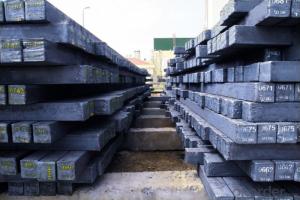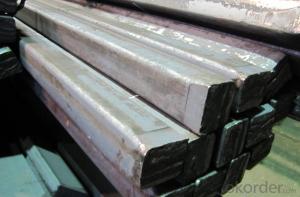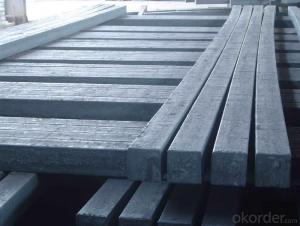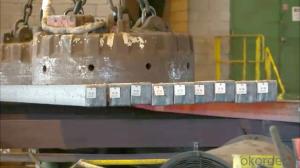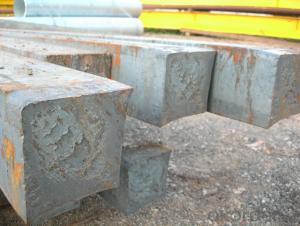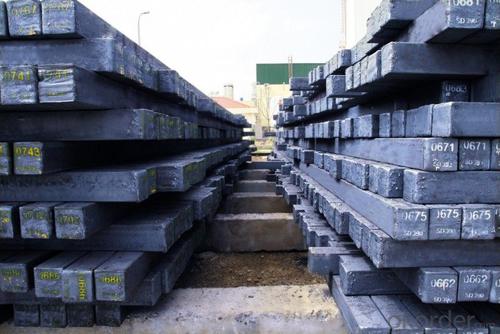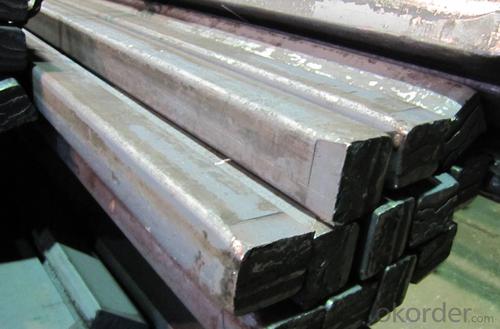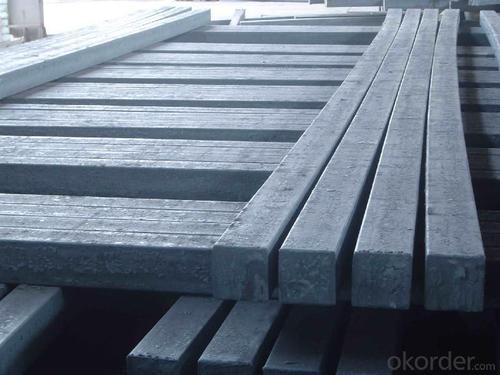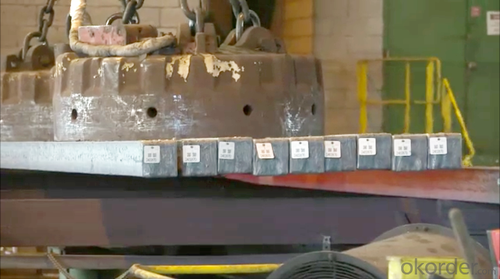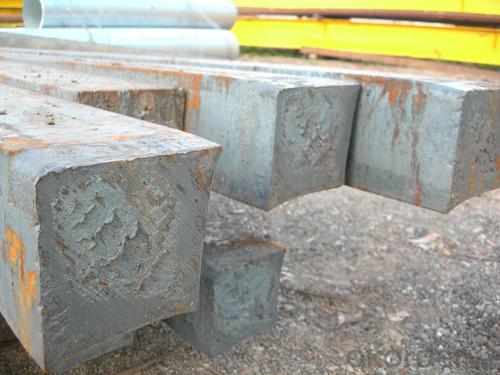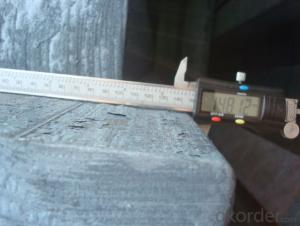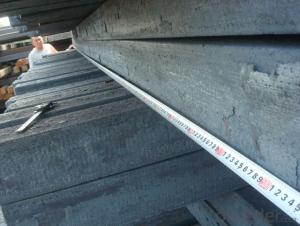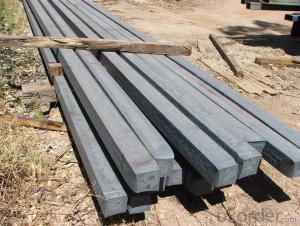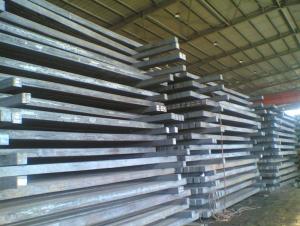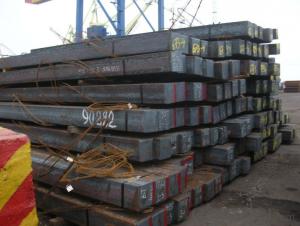Hot Rolled Steel Billet 3SP Standard 185mm
- Loading Port:
- Shanghai
- Payment Terms:
- TT OR LC
- Min Order Qty:
- 100 m.t.
- Supply Capability:
- 10000 m.t./month
OKorder Service Pledge
OKorder Financial Service
You Might Also Like
Structure of Hot Rolled Steel Billet 3SP Standard 185mm

Description of Hot Rolled Steel Billet 3SP Standard 185mm
Prepainted Rolled steel Coil is a kind of coated steel coil/sheet. With the cold rolled steel of different strength and thickness as substrate, it is produced through applying Al-Zn coat on both faces by hot dip process. In its coating, Al accounts for about 55%, Si 1.6%, while the remaining is Zn. Aluminum zinc coils enjoys both the physical protective feature and durability of Al and the electrochemical protective property of Zn. And its surface has bright silver color and regular embossed-like figure, which are highly decorative. RAL Scale Z35 Prepainted Rolled Steel Coil for Construction Roofing

Main Feature of Hot Rolled Steel Billet 3SP Standard 185mm
1.Corrosion resistance: It mainly depends on the zinc protection. When the zinc being worn,
2. Heat resistance: steel sheet has excellent heat resistance, can withstand high temperatures over 300 centigrade, and is similar with aluminized steel high temperature oxidation resistance. It often used in chimney pipes, ovens, fluorescent lighting device and the device cover.
3. Heat reflective: Galvanized steel plate heat-reflective high rate is twice as galvanized steel, often used to make insulation materials. RAL Scale Z35 Prepainted Rolled Steel Coil for Construction Roofing
Applications of Hot Rolled Steel Billet 3SP Standard 185mm
1. Construction and building: roofing; ventilating duct; handrail; partition panel;etc.
2. Electric appliance: refrigerator; washing machine; refrigerator; DVD;etc.
3.Transportation: oil tank; gas tank;road sign; etc.
4.Agriculture constructions :barn; etc.RAL Scale Z35 Prepainted Rolled Steel Coil for Construction Roofing
5.Others:vending machine; game machine; auto parts spare parts etc.
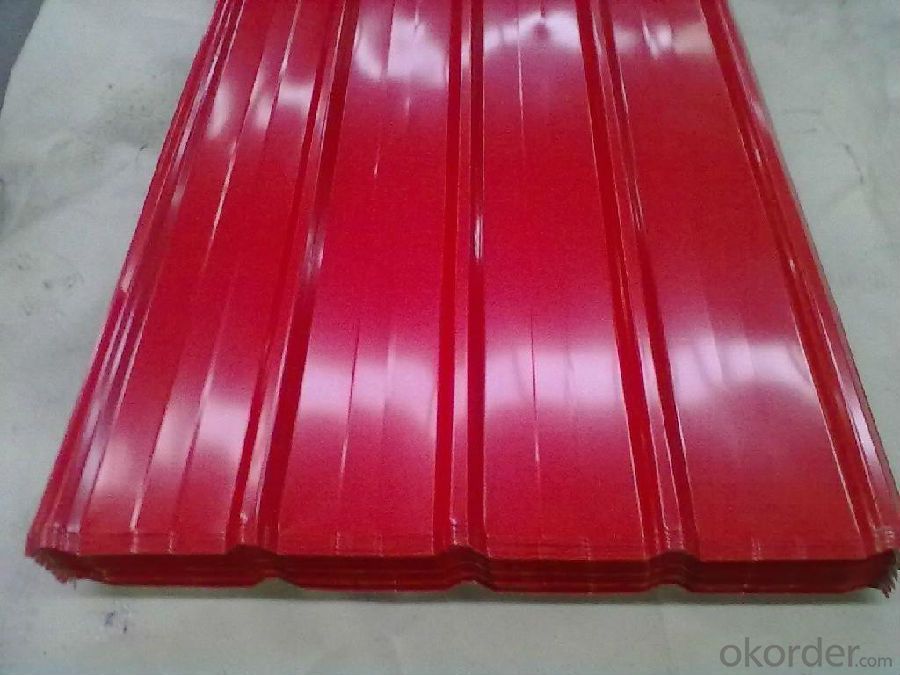
Specifications of Hot Rolled Steel Billet 3SP Standard 185mm
Product | Hot Rolled Steel Billet 3SP Standard 185mm |
Material Grade | SGCC / SGCH / DX51D+AZ, etc |
Thickness | 0.5-3.0mm |
Width | 700-1500mm |
Tolerance | Thickness: +/-0.02mm , Width:+/-2mm |
Zinc-coating | AZ30-150g/m2 |
Technique | Raw material: Hot rolled steel coil --> Cold rolled_>hot dipped galvalume |
Surface | Dried, Chromated, Unoiled,RAL Scale Z35 Prepainted Rolled Steel Coil for Construction Roofing |
Spangle | Regular spangle , small spangle, zero spangle |
ID | 508MM 610MM |
Coil weight | 25MT max |
Export package | Cardboard inner sleeves, Waterproof paper, galvanized steel covered and steel strip packed |
FAQ of Hot Rolled Steel Billet 3SP Standard 185mm
We have organized several common questions for our clients,may help you sincerely:
1. What is the minimum order quantity ?
Our MOQ is 100 mt for each size each specification. Usually we can offer discount if can buy large QTY once. RAL Scale Z35 Prepainted Rolled Steel Coil for Construction Roofing
2. How long can we receive the product after ordering?
Our general delivery time is 30 days after confirmation, but so some special orders, we have offer special delivery time
3. How to guarantee the quality of the products?
We have established the international advanced quality management system ,every link from raw material to final product we have strict quality test;We resolutely put an end to unqualified products flowing into the market. At the same time, we will provide necessary follow-up service assurance.
4. What is the payment?
We accept T/T, L/C
- Q: How do steel billets contribute to the manufacturing of rail and transportation systems?
- Steel billets are crucial in the manufacturing process of rail and transportation systems. These billets serve as the primary material used to produce various components needed for railway construction, including rails, sleepers, and fasteners. One of the main applications of steel billets in rail manufacturing is for the creation of railway tracks. Initially, the steel billets are heated and then rolled into long, slim sections known as rails. These rails undergo further processing and treatment to endure the heavy loads and constant wear and tear experienced in railway operations. The durability, strength, and resistance to deformation of steel make it a perfect material for railway tracks, ensuring transportation safety and efficiency. Steel billets also have a vital role in the manufacturing of sleepers or railroad ties, which provide support to the rails and maintain their alignment. These sleepers, typically made from prestressed concrete or wood, require reinforcing bars made from steel billets to enhance their strength and structural integrity. Additionally, steel billets are used to produce fasteners like bolts, clips, and spikes, which are essential for securely attaching rails to sleepers and maintaining track stability. Furthermore, steel billets are utilized in the production of various components for transportation systems, including chassis, frames, and suspension systems for trains, trams, buses, and other vehicles. The high strength and excellent formability of steel billets make them an ideal choice for these applications, as they can withstand heavy loads and provide the necessary structural integrity for safe and reliable transportation. To conclude, steel billets play a significant role in the manufacturing of rail and transportation systems. From railway track production to the fabrication of sleepers, fasteners, and vehicle components, steel billets offer the required strength, durability, and structural integrity for the efficient and safe operation of railways and transportation systems.
- Q: What types of steel are commonly used for billets?
- The types of steel commonly used for billets include carbon steel, alloy steel, and stainless steel.
- Q: What are the different methods of steel billet surface polishing?
- There are several methods available for steel billet surface polishing, each with its own advantages and applications. These methods include mechanical polishing, chemical polishing, electrochemical polishing, and abrasive blasting. Mechanical polishing is a widely used method that involves the use of abrasive materials to remove surface imperfections and create a smooth finish. This can be done manually using sandpaper or with the help of machinery such as buffing machines or belt sanders. Mechanical polishing is effective in removing scratches, oxidation, and other surface defects, resulting in a polished and reflective surface. Chemical polishing is a non-mechanical method that utilizes chemical reactions to remove surface imperfections. This process involves the immersion of the steel billet in a chemical solution that dissolves a thin layer of the material, resulting in a smoother surface. Chemical polishing is often used for intricate or delicate parts, as it can achieve a high level of precision and uniformity. Electrochemical polishing, also known as electropolishing, is a method that combines chemical and electrical processes to polish the steel billet surface. It involves immersing the billet in an electrolyte solution and applying an electric current. The electrical current removes microscopic peaks and imperfections, resulting in a smoother and brighter surface. Electrochemical polishing is commonly used for stainless steel billets due to its ability to remove surface contaminants and enhance corrosion resistance. Abrasive blasting, also known as sandblasting, is a method that uses high-pressure air or water to propel abrasive materials onto the steel billet surface. This process effectively removes rust, scale, and other surface contaminants, resulting in a clean and textured finish. Abrasive blasting can be done using various abrasive materials such as sand, steel shot, or glass beads, depending on the desired surface finish. In summary, the different methods of steel billet surface polishing include mechanical polishing, chemical polishing, electrochemical polishing, and abrasive blasting. Each method has its own advantages and applications, offering a range of options to achieve the desired surface finish for steel billets.
- Q: Are steel billets used in the production of sporting goods?
- Yes, steel billets are commonly used in the production of sporting goods. They are often utilized to create various components such as the shafts of golf clubs or the frames of bicycles. Steel billets provide durability and strength to these sporting goods, making them suitable for intense physical activity.
- Q: What are the safety precautions when working with steel billets?
- When working with steel billets, it is important to follow certain safety precautions to prevent any accidents or injuries. Some of the key precautions include: 1. Personal Protective Equipment (PPE): Wear appropriate PPE such as safety goggles, gloves, steel-toe boots, and protective clothing to protect yourself from potential hazards. 2. Proper Handling Techniques: Use proper lifting techniques when moving or transporting steel billets to avoid strain or injuries. Use mechanical aids like cranes or forklifts if necessary. 3. Inspection and Maintenance: Regularly inspect and maintain equipment such as forklifts, cranes, and lifting slings to ensure they are in good working condition and can safely handle the weight and load of the steel billets. 4. Secure Storage: Store steel billets in a secure and designated area to prevent them from falling or rolling over, which can cause serious injuries. 5. Fire Safety: Be aware of fire hazards and ensure that fire extinguishers are readily available in case of emergencies. Proper storage and handling of flammable substances should also be followed. 6. Communication and Signage: Properly communicate and provide clear signage to indicate potential hazards, restricted areas, and safety procedures. 7. Training and Awareness: Provide appropriate training to workers about the potential hazards associated with working with steel billets, as well as the necessary safety procedures to follow. Regularly reinforce safety protocols and encourage a safety-conscious work environment. By following these safety precautions, the risk of accidents or injuries when working with steel billets can be significantly reduced, ensuring a safer work environment for everyone involved.
- Q: How are steel billets used in the manufacturing of machinery?
- Steel billets are used in the manufacturing of machinery as a primary raw material. They are heated and shaped into various components, such as gears, shafts, and structural frames, which are then assembled to create the machinery. The high strength and durability of steel billets make them ideal for withstanding heavy loads and harsh working conditions, ensuring the reliability and longevity of the machinery.
- Q: What are the properties of alloy steel billets?
- Alloy steel billets possess a combination of properties that make them highly desirable for various applications. These properties include high strength, excellent hardness and wear resistance, good toughness, and improved corrosion resistance compared to carbon steel. Additionally, alloy steel billets have the ability to withstand high temperatures and exhibit excellent machinability, making them ideal for use in industries such as automotive, aerospace, construction, and manufacturing.
- Q: Can steel billets be used for making tools?
- Yes, steel billets can be used for making tools. Steel billets are raw metal blocks that can be further processed and shaped into various tools through techniques like forging, machining, and heat treatment. The high strength and durability of steel make it an ideal material for tool manufacturing, as it provides the necessary hardness, toughness, and resistance to wear and tear.
- Q: How are steel billets used in the manufacturing of railway components?
- Steel billets are an essential raw material used in the manufacturing of railway components. These billets serve as the starting point for the production of various components such as rails, wheels, axles, and other structural parts. To begin with, steel billets are heated in a furnace to a specific temperature to make them more malleable and easier to shape. Once heated, the billets are then passed through a series of rolling mills, where they are progressively shaped into the desired form. For instance, to manufacture railway tracks, the heated billets are rolled and shaped into long continuous bars of steel known as rails. These rails are then cut to the required length and undergo further processes such as straightening, grinding, and drilling to meet the necessary specifications. Similarly, steel billets are also used in the manufacturing of railway wheels and axles. The heated billets are rolled and shaped into round bars, which are then further processed to form the wheel and axle components. These components undergo additional processes such as heat treatment, machining, and testing to ensure their strength, durability, and ability to withstand the heavy loads and stresses associated with railway operations. Furthermore, steel billets are utilized in the production of other railway components such as couplers, buffers, and suspension systems. These billets are shaped and processed according to the specific requirements of each component to ensure their proper functioning and compatibility with the overall railway system. In summary, steel billets are a critical ingredient in the manufacturing of railway components. They are transformed through heating and rolling processes to create various parts such as rails, wheels, axles, and other structural elements. These components are then further processed and tested to ensure their quality, reliability, and compliance with the demanding standards of the railway industry.
- Q: How are steel billets used in the production of molds?
- Steel billets are used in the production of molds as a raw material. They are melted, shaped, and cooled to form the mold, which is then used to cast various products. The steel billets provide the necessary strength and durability to withstand the high temperatures and pressures involved in the molding process.
Send your message to us
Hot Rolled Steel Billet 3SP Standard 185mm
- Loading Port:
- Shanghai
- Payment Terms:
- TT OR LC
- Min Order Qty:
- 100 m.t.
- Supply Capability:
- 10000 m.t./month
OKorder Service Pledge
OKorder Financial Service
Similar products
Hot products
Hot Searches
Related keywords
